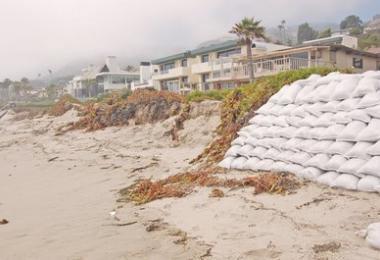9 Easy Facts About Shore Protect Team Explained
Table of ContentsThe Basic Principles Of Shore Protect Team How Shore Protect Team can Save You Time, Stress, and Money.The Greatest Guide To Shore Protect TeamAn Unbiased View of Shore Protect TeamOur Shore Protect Team PDFsUnknown Facts About Shore Protect TeamThe Single Strategy To Use For Shore Protect Team
Reduction in building value: As the location tourist is affected by disintegration, so after that is the economy. Customers are much less most likely to browse for a coastline house that can be destroyed at any minute by the impending flooding and disintegration emergency situation. Subsequently, building value can drop exceptionally and affect the entire area.Whether a beach is simply tiny and crowded or needs to close completely for the safety of the ecosystem and close-by homes, this considerably affects tourist. Consequently, neighborhood economies are affected (https://www.smugglers-alfriston.co.uk/profile/shoreprotectteam80242/profile). Danger of injury: The boosted danger of flooding and structural failings creates an enhanced danger of injury to close-by travelers and community members

Shoreline stabilization is straight related to their work. Waterside hotels: Due to the fact that coastline disintegration influences tourism, it impacts the success of waterfront hotels.
Not known Details About Shore Protect Team
This eventually brings about closures and abandoned beachfront homes. Coastal business companies: No vacationers suggests no service. For those services satisfying locals, their residential property goes to danger of damages from erosion and flooding. Coastal state parks: State parks that exist along coastlines go to threat of damages. Not just to the manmade structures and homes on site, but additionally to the all-natural communities that exist within.
Soft stablizing is a better option for the environment and even more lasting overall. Tough stablizing uses man-made structures as protection to manage disintegration. Generally, these frameworks are set up at best angles or alongside quit sand movement and lessen the force of waves. A lot of forms of tough stablizing like seawalls and sheet metal are not ideal for shoreline stabilization.
The 10-Second Trick For Shore Protect Team
There's also insufficient evidence of their performance depending on the kind of shoreline and neighborhood problems. Difficult stabilization methods often tend to be much more challenging to install and don't match the all-natural visual, sticking out like a sore thumb and hurting neighborhood communities in many scenarios. Beach nutrition is the procedure of adding shed sand and sediment back to coastlines after erosion has actually happened.
TrapBags aid in the procedure of coastline sustenance by securing natural ecosystems and enabling plants to expand. While this procedure can be expensive and is not long-term, the pros tend to surpass the disadvantages. TrapBag barriers offer numerous buildings that make them perfect for seaside and riverbank disintegration protection. They're: Eco-friendly: You can use native soil both to surround and to load the TrapBags.

How Shore Protect Team can Save You Time, Stress, and Money.
Easy to mount: Reduce of installation suggests TrapBags can be deployed swiftly in the occasion of an emergency situation. They can likewise be mounted with no hefty equipment. Inexpensive: TrapBags are ideal for both little and big areas of shoreline. They offer an inexpensive service to cover jobs of any kind of size.
The ideal seawall layout depends on location-specific elements, consisting of bordering disintegration procedures. There are 3 main kinds of seawalls: upright, rounded, tipped, and piles (see table listed below).
All-natural obstacles, such as reef and mangrove forests, protect against the spread of tidal waves and the flow of seaside waters and reduced the flood and rise of water. A cost-benefit approach is an efficient method to establish whether a seawall is proper and whether the benefits are worth the expenditure.
Shore Protect Team Things To Know Before You Get This
A seawall is a fixed feature which can contrast with the dynamic nature of the coast and impede the exchange of debris between land and sea. The table below sums up some positive and adverse impacts of seawalls which can be utilized when contrasting their effectiveness with various other coastal monitoring choices, such as coastline sustenance. [] Benefits and disadvantages of seawalls according to Short (1999) Advantages Negative aspects Long term service in contrast to soft beach sustenance.

This can create coastlines to dissipate, rendering them worthless for beach goers. Generally, seawalls can be a successful way to manage coastal disintegration, however just if they are created well and out of products that can endure the force of recurring wave energy. Some understanding is required of the coastal processes and morphodynamics particular to the seawall location.
See This Report on Shore Protect Team
The suitable seawall style counts on location-specific elements, consisting of surrounding erosion processes. There are 3 major sorts of seawalls: vertical, bent, tipped, and mounds (see table listed below). A record published by the United Nations Environment Programme (UNEP) recommends that the tsunami of 26 December 2004 triggered less damage in the locations where all-natural obstacles were existing, such as mangroves, coral reefs or coastal plant life.
All-natural barriers, such as coral reefs and mangrove forests, prevent the spread of tsunamis and the circulation of seaside waters and minimized the flooding and rise of water. A cost-benefit method is an efficient method to establish whether a seawall is appropriate and whether the advantages are worth the expenditure.
Shore Protect Team Fundamentals Explained
A seawall is a static feature which can conflict with the vibrant nature of the shore and impede the exchange of sediment in between land and sea. Advantages and downsides of seawalls according to Short (1999) Advantages Negative aspects Lengthy term solution in comparison to soft coastline sustenance.

This can cause coastlines to dissipate, providing them worthless for beach goers. Normally, seawalls can be an effective way to control coastal erosion, however only if they are created well and out of products that can stand up to the pressure of continuous wave energy.